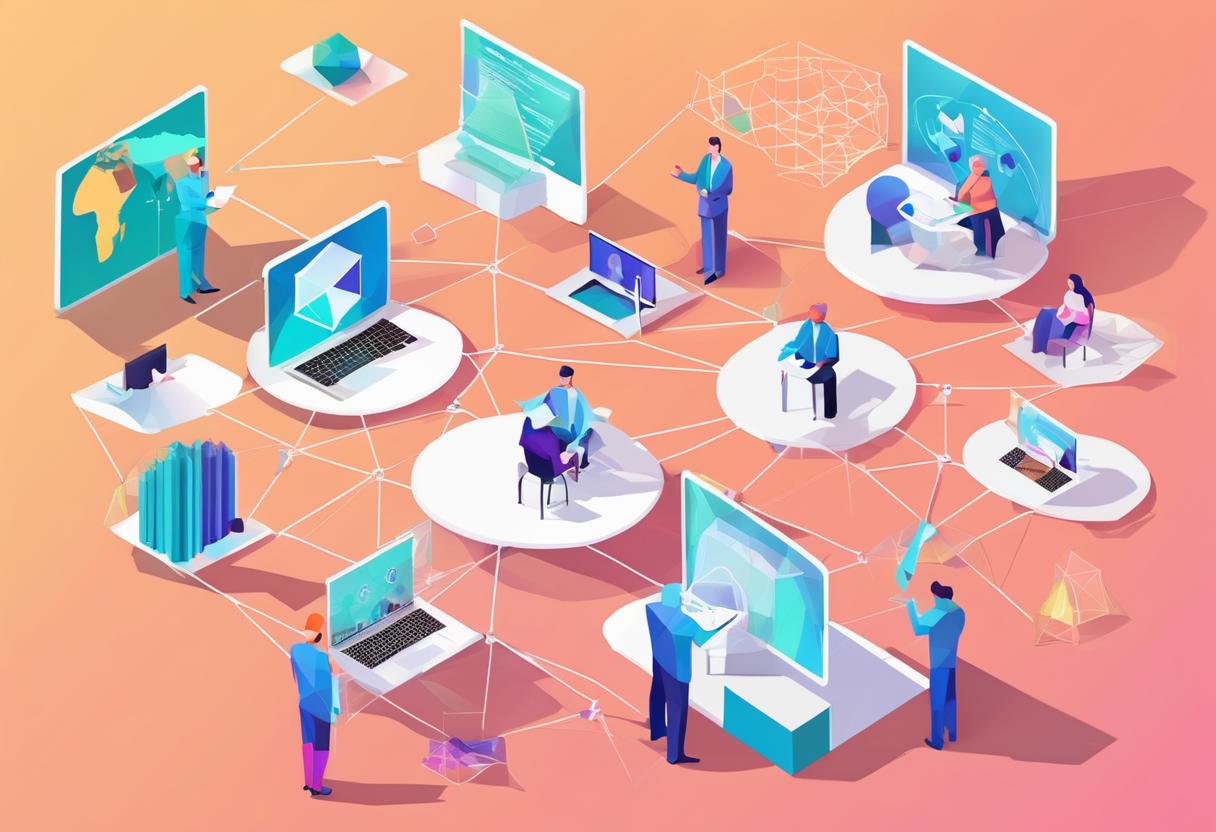Coined by famed management expert and author Peter Drucker in 1959, the term “knowledge workers” described a new class of workers expected to process information and generate value-added output. In other words, they are paid to think.
Even before being named, knowledge work had a long history in the professions of engineers, architects, lawyers, analysts, and consultants. In the last few decades, knowledge has been increasingly at the core of emerging new careers — computer programmers, software engineers, cloud architects, app developers, and digital marketers, to name just a few.
However, the future of knowledge work is somewhat unclear with the impact of automation, artificial intelligence, and robotics on many of these sectors.
Numerous sources agree that automation and artificial intelligence have the potential to severely alter or even eliminate millions of jobs. While knowledge workers are amongst those least likely to be displaced, they are challenged to find a way forward with these tools, boosting productivity and possibly improving their quality of life.
A Place For Knowledge Work
Discussions about the future of knowledge work are inherently intertwined with current return-to-office debates as Key Performance Indicators (KPIs) are challenging to establish, and personal preferences can define the ideation process. The Industrial Revolution marked the division between work and home, while the COVID-19 pandemic revolutionized our understanding of work-from-home. In this journey, it has become clear that knowledge work is especially unbound to traditional workplaces, but its relationship to place remains intangible.
Subject matter experts and workplace designers resoundingly conclude there is no one-size-fits-all solution. As we envision the future of work, we must carefully balance the relationship between what employees need, what designers visualize, and what companies can provide.
A Day in the Life: Knowledge Worker in the New Equilibrium of 2040
Emma wakes to the hum of motorized blinds in her bedroom. The daylight trickles in, and sensors and lights work together to fill the shadows and support her circadian rhythms. As she prepares for the day, her digital assistant reads aloud her schedule.

She will be going into the hub today. It has been a while, but several of the members of her work cohort are available to meet in person. Schedules have been aligned, a group lunch has been arranged, and a self-driving vehicle has been ordered. She leaves her home, and the vehicle has been waiting. An iced mocha sits in the cupholder next to the seat; her standing order was already prepared and placed in the vehicle before arriving.
As the vehicle takes her to the hub, she reviews her digital communications, ensuring that she appropriately responds and delegates all tasks to her digital assistant and her global thought partners to keep projects active twenty-four hours a day, seven days a week.
When she arrives at the hub, an in-person concierge, Mia, greets her warmly. Emma’s security badge is verified, and the building is aware of her arrival. Based on her tasks and who she wanted to work with today, a seat in a cove has been reserved for her.

“Additional members of your cohort can join for lunch; a total of twelve people. I have booked you into the lush seating area, and the menu is available on your task list.” Mia says as she hands her a luxurious cashmere blanket — last time Emma was here, she had mentioned to Mia that the cove was a bit chilly. Emma smiled and thanked Mia for her attention to detail.
Once in the cove, the lighting and noise suppression settings were automatically adjusted to her preferences. The self-evaluation tools asked questions to determine what physical conditions best supported her work; while she would have thought that silence would be ideal when she was drafting reports, fifty decibels of background noise worked best.
Like at home, the lighting would slowly adjust throughout the day: very cool and bright in the morning to support focus, warm and dim in the evening before ending the day.
If Emma ever had a headache, she could quickly let her digital assistant know, and the space would be adjusted accordingly with lights dimmed, noise suppression increased, and a strategic selection of seat — distant from a specific colleague Emma had noted often wore a strong perfume.

As promised, the menu was on her task list, suggesting a few items perfectly aligned with Emma's tastes and diet requirements. She selects her preference, and the order is collected with that of her colleagues. The meal will be waiting for them, ensuring time is spent socializing instead of organizing. Her digital assistant tells her when it is time to leave for lunch, recommending the longer scenic walk through the atrium — it is an ideal opportunity for her to think about the best way to diagram a new process on which she is working.
One of the cohorts, Aiden, will be fifteen minutes late. A level five flow state was detected. Given that he was nearly done with his task, his digital assistant would have rescheduled any nonessential meetings or, like now, informed teammates of his delay to ensure his flow remained uninterrupted. His digital assistant will take note of Aiden’s condition and physical surroundings to determine patterns and make recommendations that will allow him to achieve a flow state more efficiently in the future.

During the stimulating lunch with her cohort, Emma is reminded of a colleague, Jacob, who could assist with her diagram creation. His status is set to available — her digital assistant informs her that he is at the hub lounge – and she goes there directly. The lounge is dimly lit, with tiny lights embedded into the ceiling and walls. The furniture is large and embracing, made of leather and velvet. Jacob, lying on the sofa, lights up as he sees Emma — she might be the right person to help him with a project he has been considering.
Emma returns home feeling accomplished and connected. As she prepares for her evening run, her digital assistant shares a question from one of her global thought partners. “That is a great question; I’ll have to think about that.”
Supporting Knowledge Workers Today
The effort to create an ideal place for knowledge work begins now. Here are a few ideas for how organizations can start to create an environment that supports knowledge workers today that may lead to a more ideal and productive working environment in the future:
Consider the workplace a living laboratory. Create a variety of workspaces and allow employees to select the one best suited to their tasks and preferences throughout each day. Establish an anonymized data collection system, tracking utilization and satisfaction to understand what works for your company culture at the task and individual levels. Make meaningful adjustments as necessary.
Be prepared to see activities not typically considered “work” as knowledge work. The brain is more often activated when reading, lounging, napping, running, or dancing than sitting at a computer. It is essential to value and protect the thought process, recharging the brain and stimulating creativity and problem-solving. Otherwise, employees must continue to keep this part of themselves at home.

Provide experiences and environments that are not possible at home. Provide a high-quality video booth to lead conference calls and record training materials. Create project rooms for teams to gather, with whiteboards and pin-up space that live and grow with the project. Dare to consider themed and immersive spaces. However, ensure that everything provided is in response to your workplace data and observations.
Equip employees with clarity and trust. A clear understanding of what is expected — deliverables, quality, and timelines — is essential. Just as necessary is permission for experimentation and self-discovery to achieve those goals.
Conclusion
Several factors are pushing for a return to office, including the concerning number of commercial real estate vacancies and their associated impacts on the economy, local government, and urban vitality.
However, consider Emma, our knowledge worker in 2040. At thirty-five years old, she finds herself in the early stages of her mid-career — experienced but looking for new challenges. As all children did during COVID-19, she was forced to home-school her sophomore year of high school — her first experience with remote work. Today, she is already a first-year college student, navigating the impacts of artificial intelligence on her student experience. A traditional workplace will hold little appeal for someone defining how they learn and work in this new world.
Now is the time to deepen strategic efforts and work towards a desired future. The request for processed information and value-added outputs from knowledge workers includes expectations for unique, innovative ways of thinking — it seems natural that the environment should be designed to match.
We will collect information, be observant, and continue to learn. With time, employees will better understand their work process and voice their desires; companies will choose self-reflection over a rush toward policy; and designers will strengthen their role as listeners and translators of space.
The artwork was created by Ashley Chiarelli using Designs.AI and Adobe Photoshop.
This article was previously published in Compass by the Association of Professional Futurists in October 2024.
